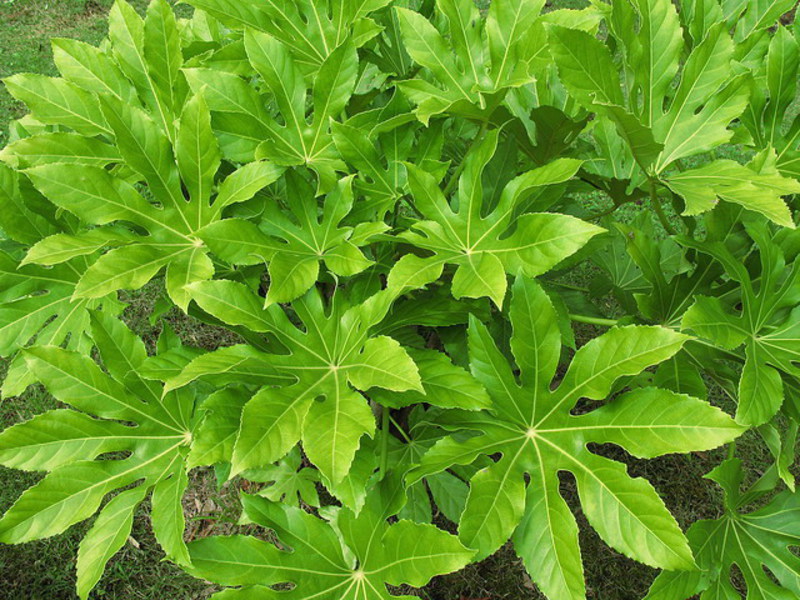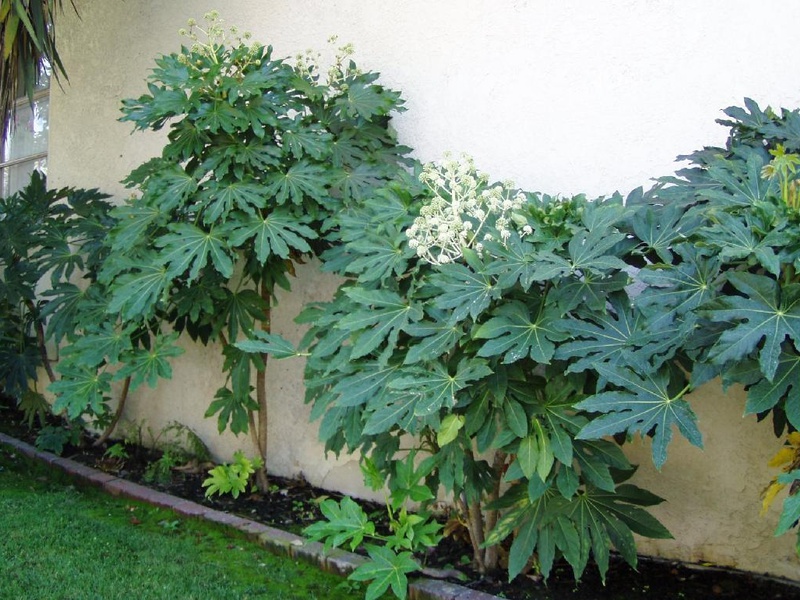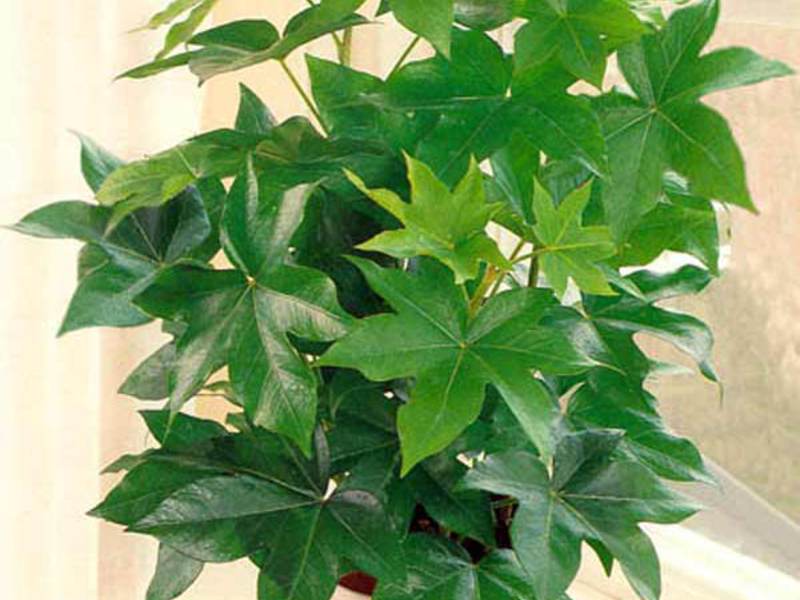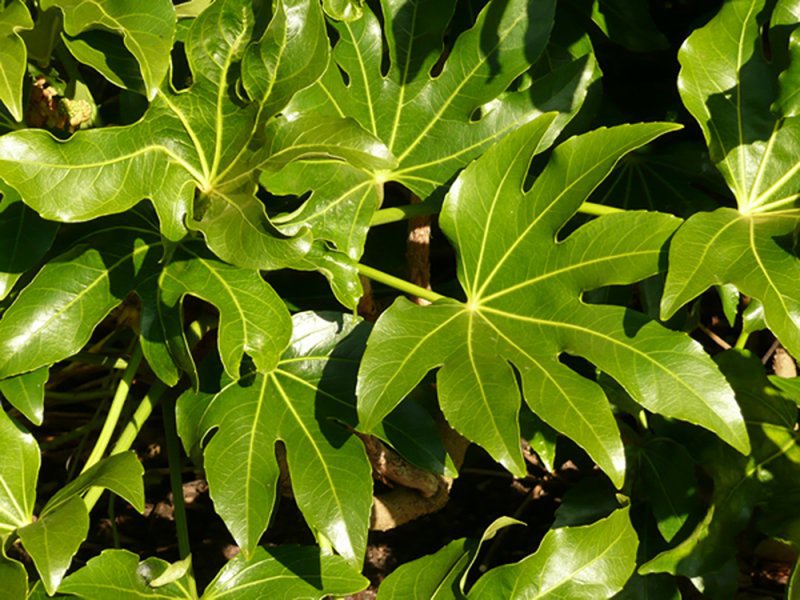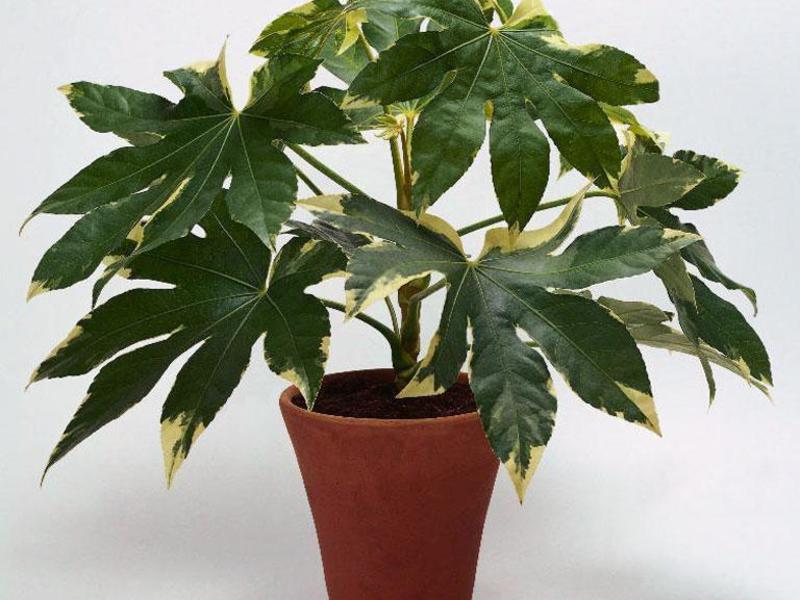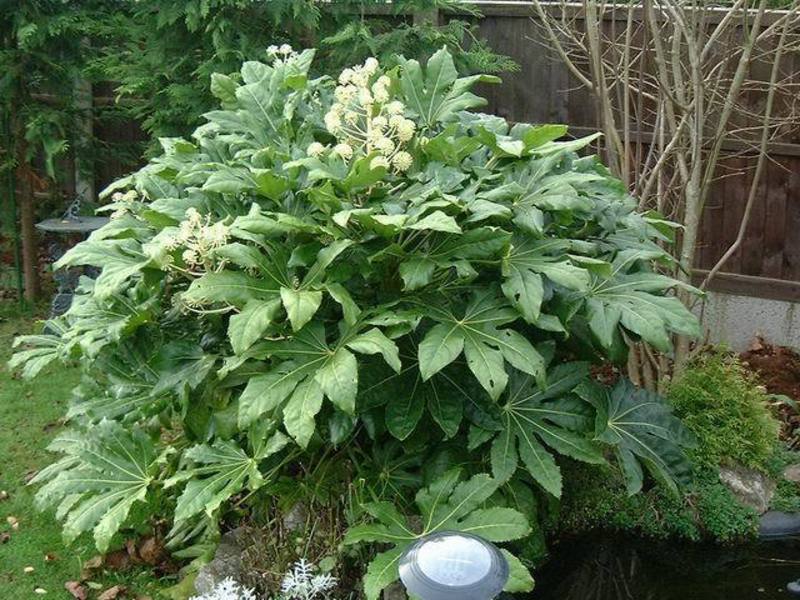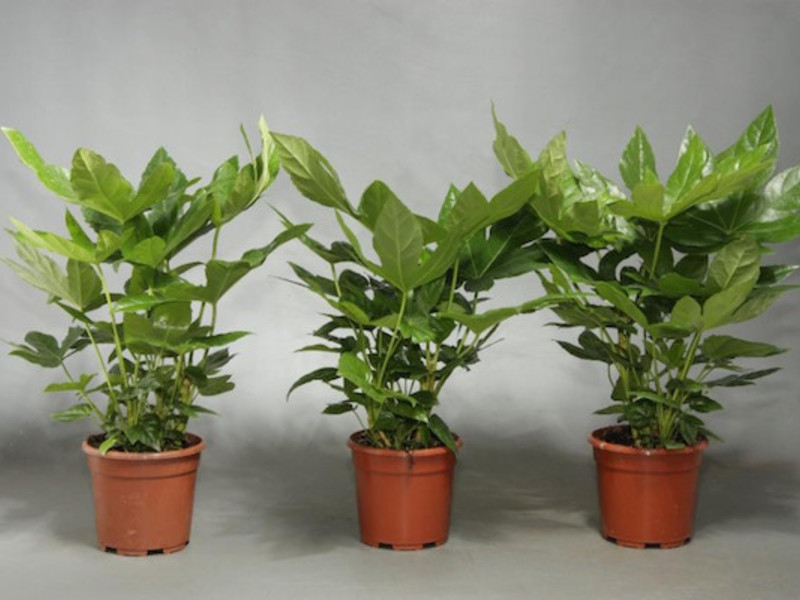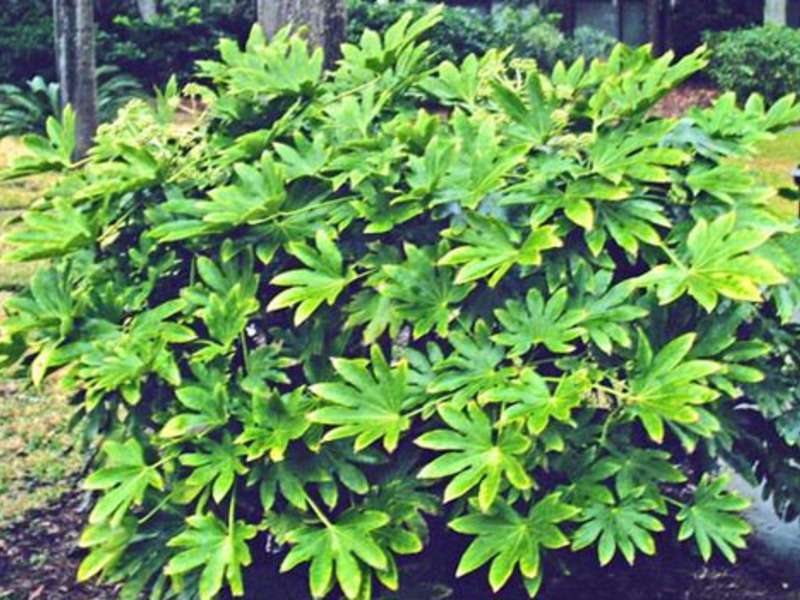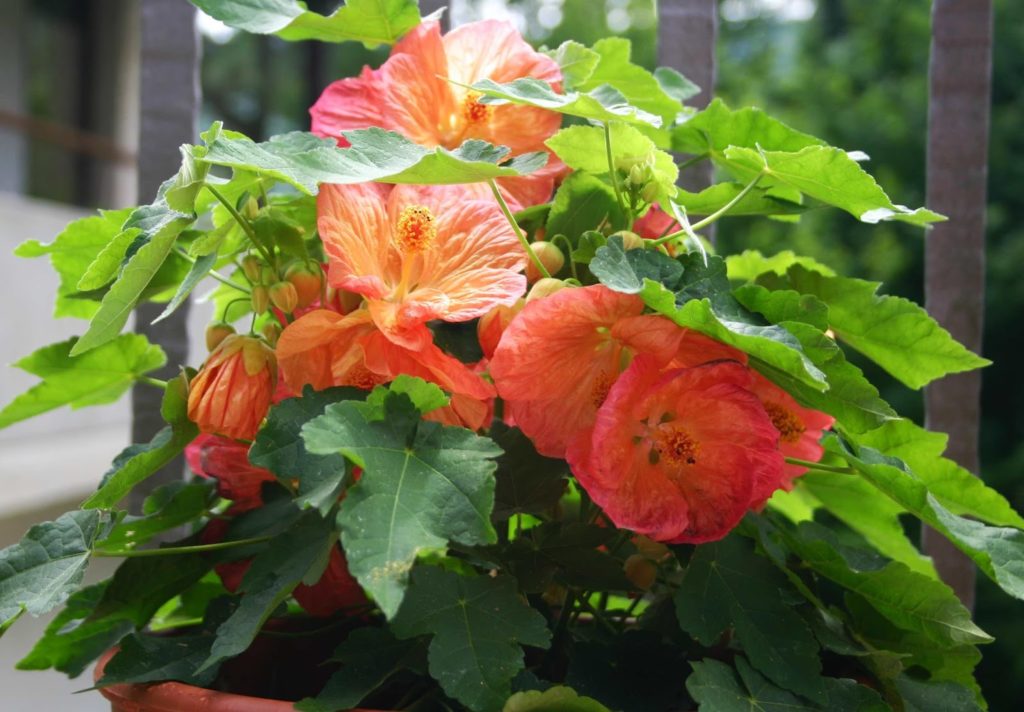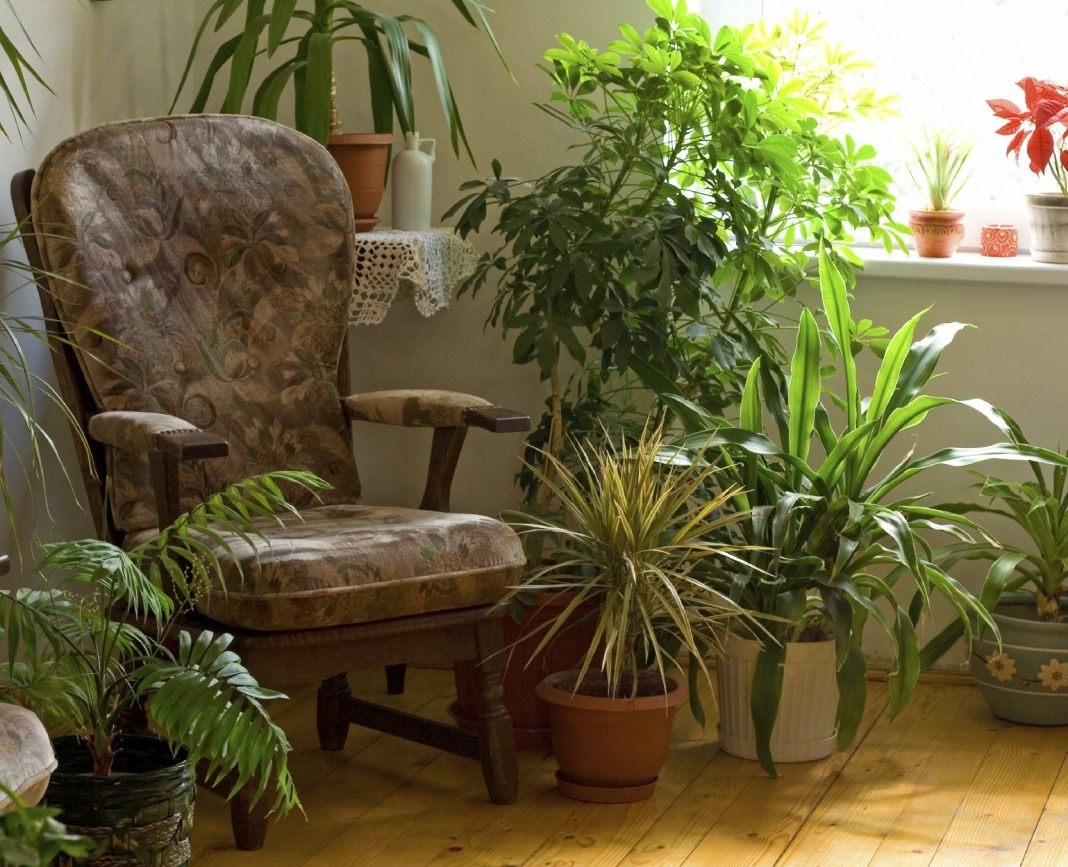Flower lovers can say a lot of flattering words about fatsia. This plant quickly conquered them with its beautiful leaves, bright green color, large size, and also an amazing shape that resembles hands with fingers. During the flowering period, small flowers are formed on the Fatsia, which have a white or yellow-green tint.
Inflorescences are presented in the form of umbrellas. After flowering, fruits begin to ripen, which look no less attractive than flowers. They can be compared with bunches of mountain ash, which are green during the setting period, but over time change their color to dark blue.
Fatsia is not only a garden plant... In our latitudes, it is also bred at home. However, when growing a plant in a pot, you should hardly count on the appearance of flowers. Although this possibility should not be ruled out, indoor fatsia blooms very rarely.
Considering that Japan is the birthplace of Fatsia, many people know it by such names as Japanese Fatsia or Japanese Aralia. In the wild, it reaches a large size - 6 meters. In our latitudes, its height is limited to 2 meters. However, this is more than enough for her to create an attractive look.
Content
Types and varieties of fatsia
It is impossible not to admire the photo of this flower. However, fatsia is a very diverse plant, so it makes sense dwell on its varieties in more detail.
Fatsia became widespread in the following forms:
- the only pure species is Japanese Fatsia (Japanese Aralia);
- hybrid of fatsia and common ivy - Fatskhedera.
The easiest way to understand exactly which plant is by the number of leaf fingers. Fatsia has an average of 7-9, and Fatshedera has a maximum of 5.
Fatshedera Lizei is represented as a tall evergreen shrub, reaching a height of over 5 meters. The stem is decorated with leaves of a dark green color, with a very dense arrangement, forming a lush crown.
As for the Japanese fatsia, within the framework of this type it is accepted highlight several similar varieties:
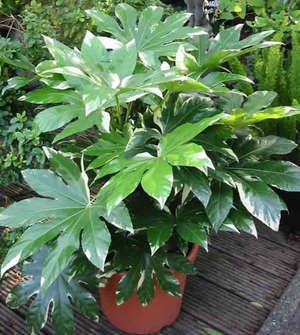 "Moseri". One of the most compact shrubs.
"Moseri". One of the most compact shrubs.- Spider's Web. The attractiveness of this species is given by green leaves with white spots resembling splashes. Due to its original design it is very popular.
- Fatsia "Variegata". This plant attracts attention due to its green leaves, which are beautifully decorated in white or cream color.
- Fatsia "Annelise". This variety forms leaves with a golden yellow hue.
- Murakumo Nishiki. Differs in leaves of light yellow color.
- Fatsia "Tsumugi Shibori". At first glance, it looks a lot like Spider's Web, although this plant has more white spots on the leaves than the aforementioned Fatsia variety.
Home care
The main activities that have to be carried out as part of caring for fatsia at home are not difficult.
Lighting
When choosing a lighting mode, you must focus on the color of the plant... Fatsia, the leaves of which are covered with a large number of variegated spots, need the brightest possible lighting. However, direct sunlight can harm plants, so they need to create artificial shade at noon to avoid burns. Instances with dark green leaves will do better when grown in partial shade. This flower can grow well in the shade, as well as in conditions of artificial lighting with fluorescent lamps. In the summer you can keep it outdoors, where it will feel even more comfortable.
Temperature regime
In the spring and summer for fatsia it is necessary maintain the temperature within 17-21 degrees... At the first signs of a cold snap, plant care should be adjusted taking into account the color of the leaves. Variegated bushes do well at temperatures no lower than 16 degrees. Plants with solid green leaves can tolerate temperatures as low as 14 degrees.
It should be taken into account that when growing fatsia at home, it is necessary, depending on the temperature, to regulate the lighting. In hot weather, plants should be provided with plenty of light.
Watering
 Plants cannot grow without regular moisture. Therefore, watering is necessary regularly. If you skip them just once, then the plants will react to this immediately: the leaves will drop, and you will have to wait a long time for them to return to their original position. However, when irrigating, it is necessary to observe the measure, since with excessive irrigation, danger of root rot, and this will lead to the plant losing its former attractiveness.
Plants cannot grow without regular moisture. Therefore, watering is necessary regularly. If you skip them just once, then the plants will react to this immediately: the leaves will drop, and you will have to wait a long time for them to return to their original position. However, when irrigating, it is necessary to observe the measure, since with excessive irrigation, danger of root rot, and this will lead to the plant losing its former attractiveness.
In summer, when determining the frequency of watering, it is necessary to focus on the degree of moisture in the upper surface layer. Noticing that he began to dry out, you should immediately carry out the next watering. In winter, the main guideline for irrigation is the room temperature. In cool conditions, irrigation is needed less often. If the temperature in the room is high enough, then the fatsia is watered in the same way as in the summer.
Spraying
It is possible to maintain sufficient hydration of the Fatsia when growing at home through this important procedure. In the summer, it should be regular, in some cases, when the heat is intense, it may be necessary to carry out watering from the shower with warm water... In winter, fatsia is sprayed much less often.
Top dressing
In winter, fatsia is at rest, so no feeding is required. In the spring, when the plant wakes up, it will need a lot of strength. Therefore, starting from this time, complex fertilizers are applied to the soil at intervals of twice a month.
The soil
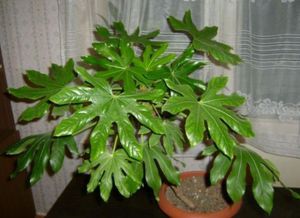 Wild species usually choose places where there is a lot of humus. In this case, the soil should have a normal acidity reaction or slightly acidic. You can maintain the necessary balance of soil acidity at home by using special planting soil.
Wild species usually choose places where there is a lot of humus. In this case, the soil should have a normal acidity reaction or slightly acidic. You can maintain the necessary balance of soil acidity at home by using special planting soil.
For its preparation use:
- turf soil (2 parts);
- humus from leaves (1 part);
- sand (1 part).
If it is not possible to prepare your own soil composition, then you can replace with store-bought ready-made soil... It is also allowed to be used for growing hydroponics.
Pruning
The benefit of the surgery is to maintain the splendor of the plant. This usually requires pruning once a year. The essence of the operation is to pinch the top. Pruning does little to injure plants, so they can easily tolerate it. Pretty soon, you can see how new leaves begin to bloom on the trunk, and young shoots form near its base, which can be used as planting material for reproduction.
Transfer
A favorable moment for transplanting, as a rule, comes when the plants grow in size and they become cramped in the pot.Transplant is required every two to three years... And in each case it is necessary to use a more spacious pot. But before you fill the container with soil, you need to make holes in the pot for drainage. After that, a layer of expanded clay or broken shards is poured there.
Reproduction of fatsia
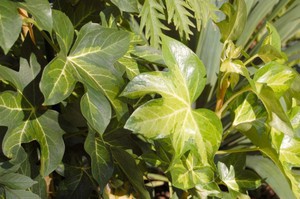 When growing fatsia at home, you can choose one of the following breeding methods:
When growing fatsia at home, you can choose one of the following breeding methods:
- using apical or stem cuttings;
- seeds.
It is recommended to breed fatsia by cuttings in the fall. The prepared cuttings are transferred to moist soil and then covered with a jar. At the first signs of rooting, you can transplant them into pots.
You can also get new Fatsia bushes by sowing seedsheld in the spring.
- the prepared seeds must be buried in the planting substrate by 1 cm, after which the container with the plantings is transferred to a warm place where the temperature is maintained at 18 degrees;
- when the seedlings become strong enough, you can transplant into individual pots, which are then transferred to a well-lit place.
Pests, diseases and methods of dealing with them
Proper care of Fatsia involves taking measures to protect against various diseases and pests. However, for a start, it does not hurt to get acquainted with the main parasites that can cause serious harm to the plant:
 whitefly;
whitefly;- aphid;
- thrips;
- red spider mite;
- mealybug;
- shield;
- gray rot.
At the first signs of parasite damage to fatsia, you need to immediately begin to act. If the measures are taken in a timely manner, then the harm will be limited only loss of a few leaves.
The fight against the disease will be to treat the affected parts with soapy water or alcohol. However, you can achieve better results if you use special preparations bought in a garden store.
Noticing that one of the plants is affected by gray mold, it can be concluded that it was not properly cared for. This disease begins to develop if fatsia is grown in a damp and cold place. You can bring the plant back to life if you immediately cut off all the leaves and provide favorable conditions for the development of the diseased plant.
Conclusion
Although fatsia is an exotic plant for our latitudes, it can be successfully grown at home. But, as with any houseplant, for him will have to create favorable conditions.
Proper care is a guarantee that fatsia will regularly delight you with abundant flowering and bright colors of leaves and flowers. Therefore, before cultivating fatsia in an apartment, it is useful to first study the features of this plant in order to be as prepared as possible for possible difficulties. And such problems in the care process can arise a lot, since plants grown in indoor conditions require much more attention. Therefore, watering alone will not be enough for them. We'll have to carry out top dressing, pruning and a number of other important activities.
